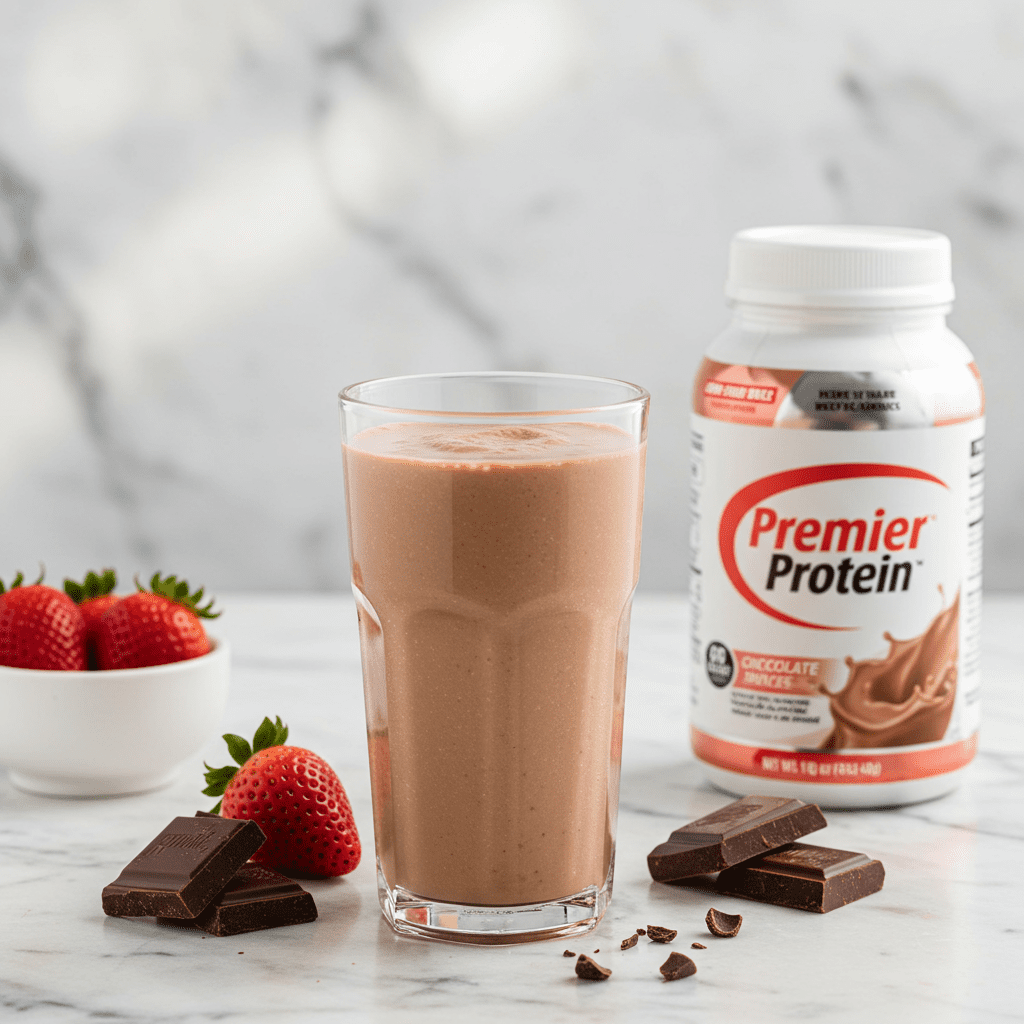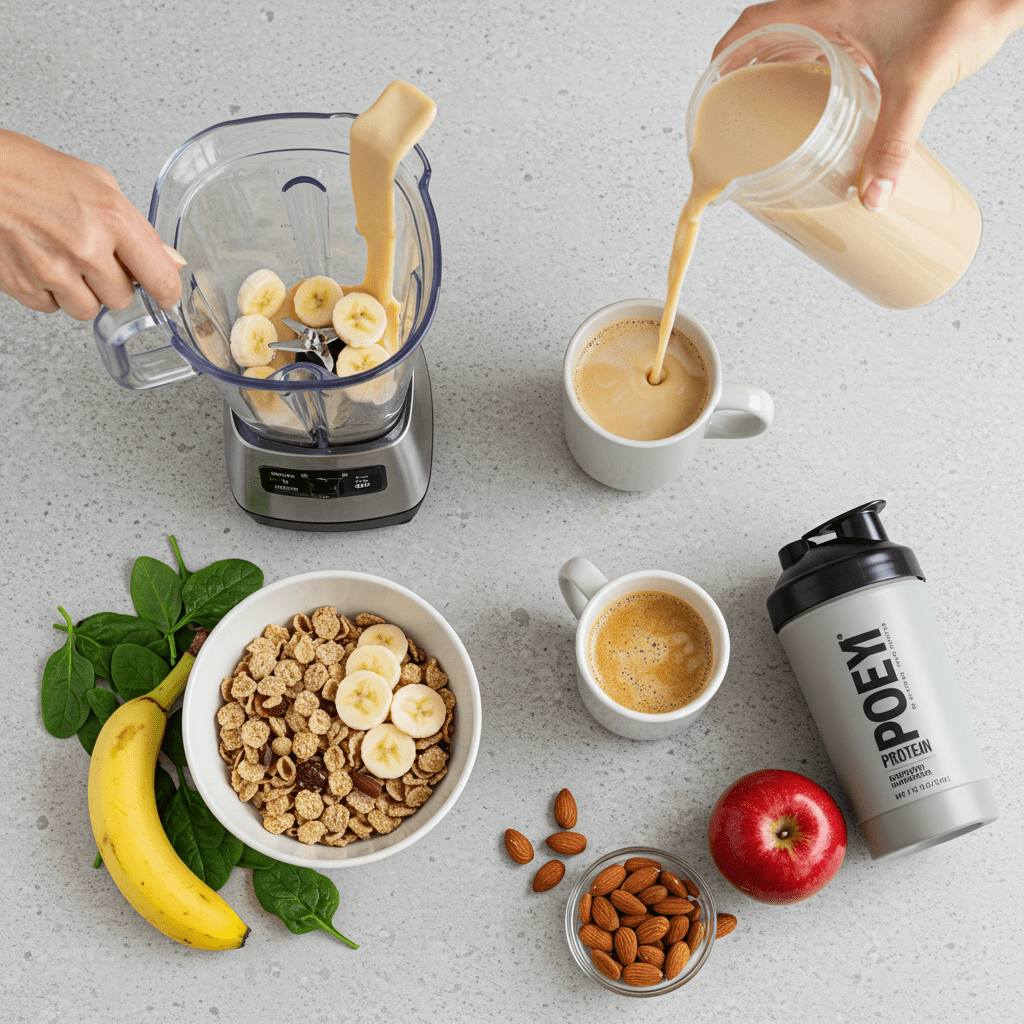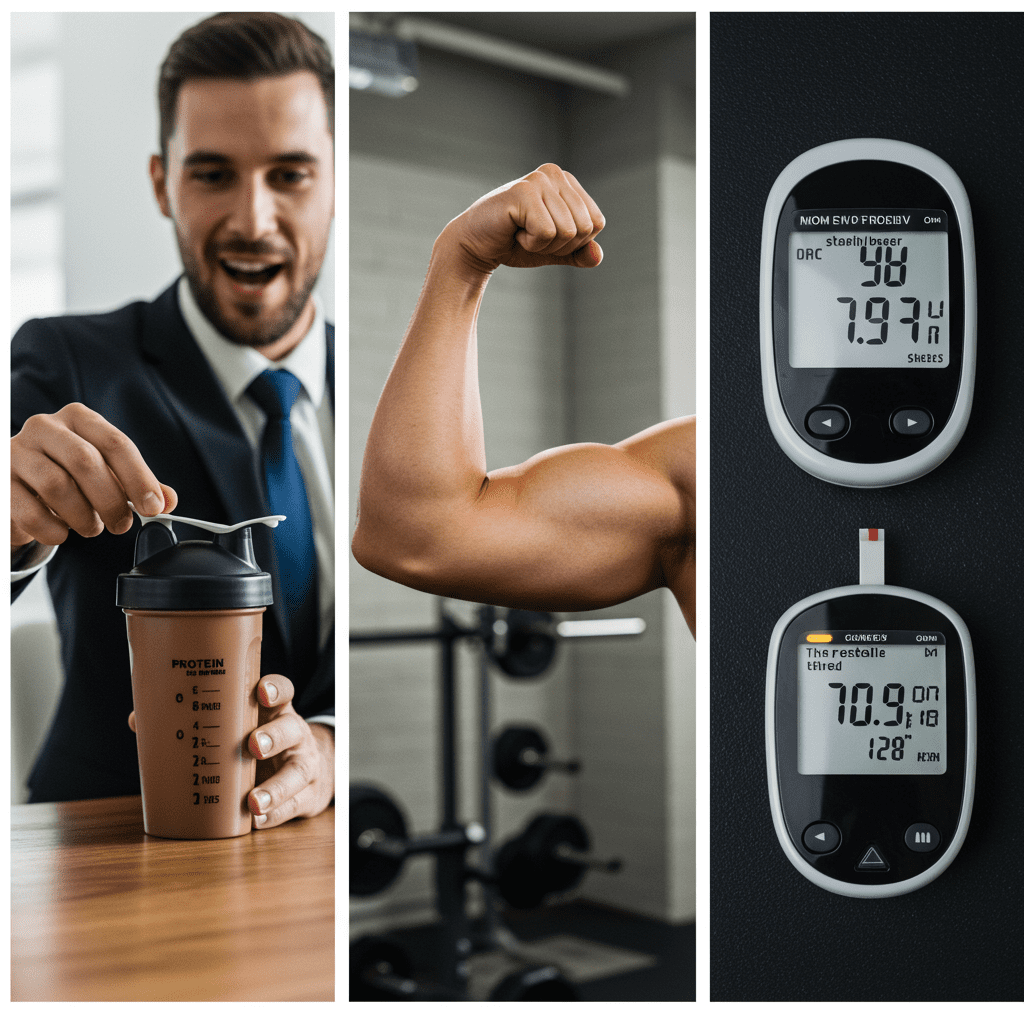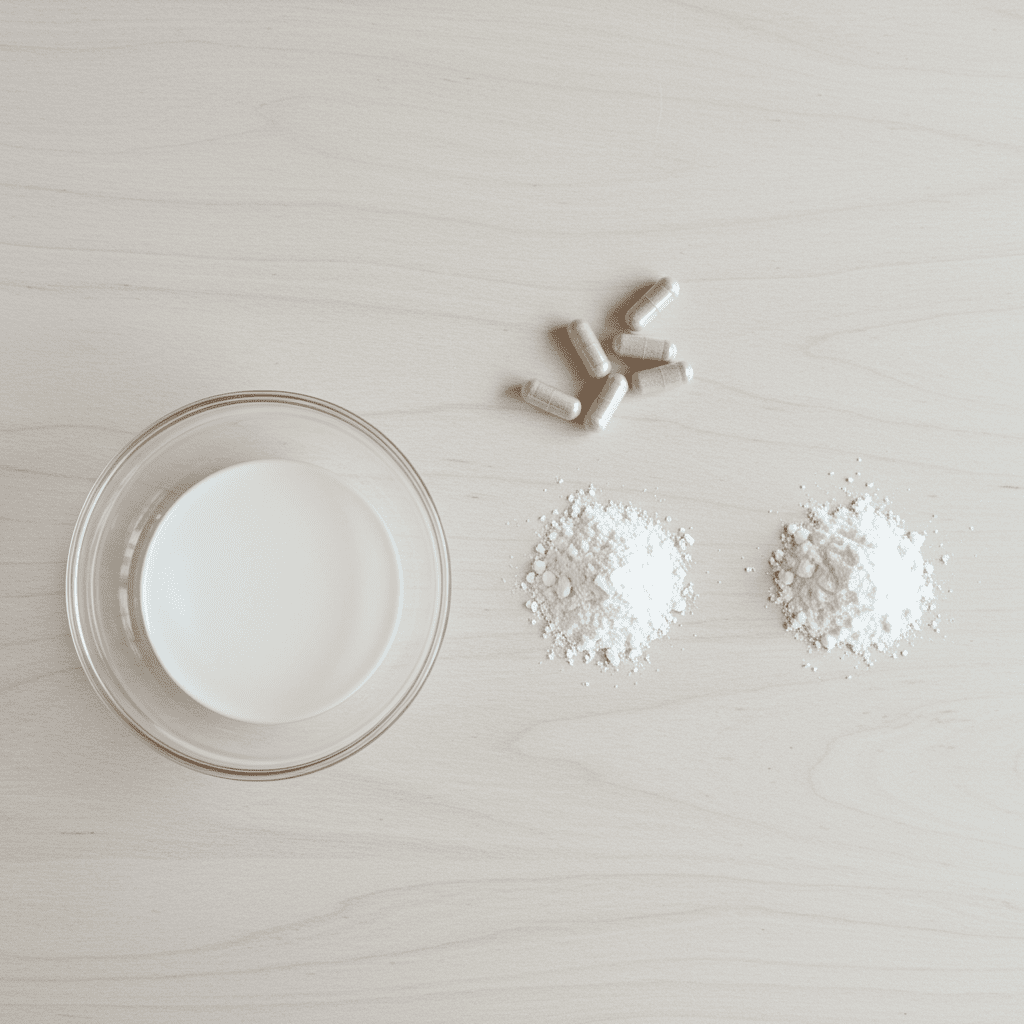Are Premier Protein Shakes a Smart Choice for Your Health? A Dietitian’s Review

Walk down the aisle of any supermarket, and you’ll see them: rows of Premier Protein shakes, promising 30 grams of muscle-building power in delicious flavors like Chocolate, Café Latte, and even Cake Batter. They’re incredibly popular, but it begs the question: are they actually a healthy choice?
Hi, I’m a registered dietitian, and my goal is to help you navigate the often-confusing world of nutrition. We’re going to look beyond the marketing claims and break down what’s really in these convenient bottles.
We’ll explore the science behind their ingredients, discuss who they might be great for, and who might want to pass. By the end, you’ll be able to confidently decide if Premier Protein is the right fit for you.
- What’s Actually Inside a Premier Protein Shake?
- Why That 30 Grams of Protein Matters
- The Clear Wins: Convenience, Muscle Support, and Blood Sugar Control
- What Are the Potential Downsides to Consider?
- Who Could Benefit Most from Premier Protein?
- Who Might Want to Find an Alternative?
- Premier Protein vs. Whole Food: A Quick Comparison
- My Dietitian-Approved Ways to Use These Shakes
- Conclusion
What’s Actually Inside a Premier Protein Shake?

To understand if a shake is good for you, we have to look under the hood. A standard 11.5 oz bottle of Chocolate Premier Protein contains a blend of ingredients designed for taste, texture, and nutrition.
The primary component is a Milk Protein Concentrate. This is a filtered milk product that contains both casein and whey protein, the two major proteins found in dairy.
This combination is beneficial because whey is digested quickly, making it great for post-workout recovery, while casein digests slowly, providing a sustained release of amino acids that can help you feel full longer. To achieve that low sugar count (just 1 gram!), the shakes use artificial sweeteners, specifically Sucralose and Acesulfame Potassium.
We’ll talk more about these later. The creamy texture comes from stabilizers and thickeners like carrageenan.
Finally, each shake is fortified with a blend of 24 vitamins and minerals, including significant amounts of Vitamin D and Calcium, which are crucial for bone health.
Why That 30 Grams of Protein Matters

The 30-gram protein headline is the main attraction, but is that number right for you? According to the National Academy of Medicine, the average sedentary adult needs about 0.8 grams of protein per kilogram of body weight.
For a 150-pound person, that’s about 55 grams per day. However, this is just the minimum to prevent deficiency.
Research consistently shows that active individuals and older adults have higher needs. As a dietitian, I often recommend 1.2 to 1.7 grams per kilogram for these groups.
For that same 150-pound person, this bumps their needs up to 82-116 grams per day. Hitting that target with whole foods alone can be challenging, though exploring options like a high-protein pasta sauce can help.
A single 30-gram shake can therefore provide a significant portion of your daily requirement, making it much easier to support muscle maintenance and growth. As Harvard’s School of Public Health notes, protein is essential for everything from organ function to immune cell production.
The Clear Wins: Convenience, Muscle Support, and Blood Sugar Control

There’s no denying the practical advantages of these shakes. First and foremost is the unmatched convenience.
For busy professionals, parents, or anyone on the go, having a ready-to-drink, nutrient-dense option is a lifesaver. From a health perspective, the high protein content is a clear win for muscle support.
Consuming adequate protein, especially after a workout, provides the building blocks your body needs to repair and build lean muscle. As the Cleveland Clinic advises, a post-workout snack rich in protein is key to recovery.
Furthermore, the low sugar content is a major benefit. With only 1 gram of sugar, these shakes are a smart choice for anyone managing their blood sugar or trying to reduce their intake of added sugars, which is a key recommendation from health authorities like the American Heart Association.
The protein also helps promote satiety, keeping you fuller for longer compared to a high-carb, low-protein snack. Making your own healthy blueberry chocolate chip muffins can be a great alternative.
What Are the Potential Downsides to Consider?

While Premier Protein shakes have their benefits, it’s important to consider the potential downsides. To keep them low in sugar and calories, they rely on artificial sweeteners like Sucralose (Splenda) and Acesulfame Potassium.
While the FDA has approved these as safe for consumption, some studies raise questions about their long-term impact on gut health. Some individuals also report digestive upset, like bloating or gas, after consuming them.
It’s also crucial to recognize that these shakes are ultra-processed foods (UPFs). According to research from Harvard, diets high in UPFs are associated with adverse health outcomes.
While one shake won’t derail a healthy diet, it’s a reminder that they lack the fiber, antioxidants, and complex phytonutrients found in whole foods. Finally, your body processes liquid calories differently than solid food.
Research published in the American Journal of Clinical Nutrition has shown that liquids are often less satiating than solid foods with the same calorie count, meaning you might feel hungry again sooner after drinking a shake than you would after eating a meal with the same amount of protein.
Who Could Benefit Most from Premier Protein?

So, who is the ideal candidate for a Premier Protein shake? I find they are most beneficial for specific groups:
- Athletes and Fitness Enthusiasts: For those needing to refuel after a tough workout, the fast-absorbing protein and sheer convenience are hard to beat.
- Busy Professionals: When you’re stuck in back-to-back meetings and tempted by the vending machine, a protein shake is a far healthier and more satisfying alternative to keep you focused.
- Older Adults: Many older adults struggle with poor appetite and muscle loss (sarcopenia). A tasty, easy-to-drink shake can be a simple way to boost protein and calorie intake to help preserve muscle mass and strength.
- Individuals with Increased Needs: People recovering from surgery or certain illnesses often have elevated protein requirements. Shakes can provide this necessary nutrition when eating large meals is difficult.
Who Might Want to Find an Alternative?

On the flip side, these shakes aren’t for everyone. You might want to choose a different option if you fall into one of these categories:
- Individuals with a Milk Allergy: Since the primary ingredient is milk protein concentrate, anyone with a true milk allergy must avoid these shakes. Those with lactose intolerance might be able to tolerate them due to the low lactose content, but it varies by individual.
- Whole-Food Purists: If your dietary philosophy centers on eating only minimally processed, whole foods, these shakes won’t align with your lifestyle.
- People with Sensitive Stomachs: If you know that artificial sweeteners or certain food additives cause you digestive distress, it’s probably best to steer clear.
- Those with Kidney Disease: Individuals with compromised kidney function often need to monitor their protein intake carefully. If this applies to you, you should only incorporate a high-protein supplement like this under the direct guidance of your doctor or renal dietitian.
Premier Protein vs. Whole Food: A Quick Comparison

How does a shake stack up against a mini-meal made from whole foods? Let’s compare.
- Premier Protein Shake (Chocolate): Provides 160 calories and 30 grams of protein. It’s incredibly fast and requires zero preparation. However, it offers minimal fiber and is less texturally satisfying.
- A Cup of Greek Yogurt with Berries and a Spoonful of Almonds: This combination offers around 250-300 calories, approximately 25 grams of protein, and a healthy dose of fiber, healthy fats, vitamins, and antioxidants. It’s more filling due to the chewing required and the presence of fiber and fat, but it requires assembly.
- 4-ounce Grilled Chicken Breast: A simple piece of chicken provides about 190 calories and a hefty 35 grams of high-quality protein. It’s highly satiating but requires cooking and planning.
This comparison highlights the central trade-off: Premier Protein offers maximum convenience, while whole foods deliver broader nutritional benefits and greater satiety.
My Dietitian-Approved Ways to Use These Shakes

As a dietitian, I’m all about making things work within a balanced diet. If you choose to use Premier Protein, here are a few ways to boost its nutritional value and make it work better for you:
- Use it as a Base: Instead of drinking it straight, pour a shake into a blender with a large handful of spinach, half a frozen banana, and a tablespoon of chia seeds. This adds fiber, potassium, and healthy fats, creating a more complete and satisfying meal replacement.
- Make a High-Protein Coffee: Use the Vanilla or Café Latte flavor as a creamer in your morning coffee for a protein-packed start to your day that will keep you much fuller than a typical latte.
- Boost Your Breakfast: Pour a shake over a high-fiber, low-sugar breakfast cereal instead of milk. This creates a powerful breakfast that helps stabilize blood sugar and prevents a mid-morning energy crash.
- Pair it with a Crunch: To combat the low satiety of liquids, drink your shake alongside a handful of almonds or an apple. The act of chewing and the added fiber will send stronger fullness signals to your brain.
Conclusion
So, what’s the final verdict on Premier Protein shakes? As a dietitian, I see them not as inherently ‘good’ or ‘bad,’ but as a highly effective tool for specific situations.
They offer a powerful combination of high-quality protein, convenience, and low-sugar content that can be a game-changer for meeting your protein needs, especially when you’re short on time or have increased requirements. However, they are not a substitute for a diet rich in whole, unprocessed foods.
The foundation of good health is always built on meals that include lean proteins, abundant vegetables, fruits, and whole grains. Use Premier Protein shakes to fill the gaps, support your fitness goals, or ensure adequate nutrition when life gets hectic—but not as the cornerstone of your diet.
Listen to your body, prioritize whole foods, and use these shakes as the convenient, powerful supplement they’re designed to be.
